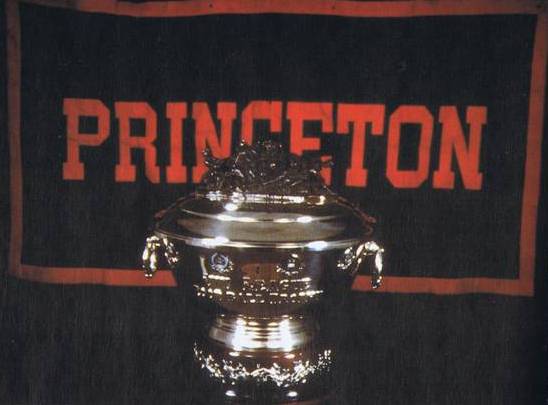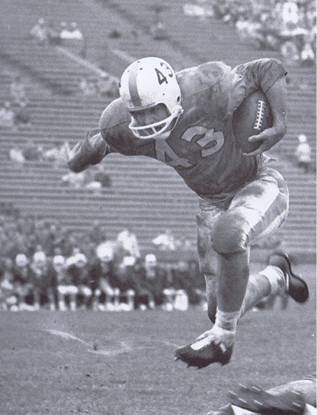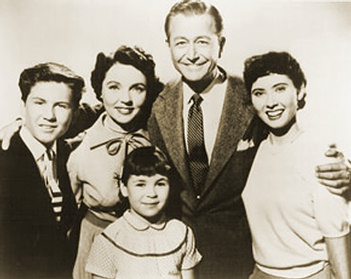

"A Tiger's Tale"
HELMET HUT NEWS/REFLECTIONS Decemeber 2011:
A Tiger's Tale
By Dr. Ken
During
my
adolescent
years
the
majority
of
fellows
that
I
knew
well
did
not
attend
college.
It
was
more
common
to
graduate
from
high
school
and
enter
the
military
service
or
the
work
force.
Relative
to
the
present
time,
we
moved
out
of
our
parents’
house,
married,
and
had
children
much
earlier
than
is
now
the
norm.
This
necessitated
a
full
time
job
and
source
of
income,
thus
dictating
that
the
after-school
or
weekend
jobs
that
most
of
us
had,
and
were
scheduled
around
our
high
school
sports
activities,
served
as a
launching
point
for
our
life’s
work.
As
many
of
my
friends
were
forced
to
assist
their
fathers
or
other
family
relatives
in
their
various
trades
or
labor
type
of
jobs,
this
was
the
path
that
was
often
followed
for
a
lifetime.
If
college
attendance
was
a
possibility
few
ever
discussed
the
hallowed
halls
of
the
Ivy
League
schools
as
the
academic
requirements,
expense,
and
general
knowledge
we
held
about
these
elite
institutions
placed
them
far
above
our
immediate
goals
or
realistic
plans.
The
goal
of
the
most
talented
high
school
football
players
in
our
area
was
an
opportunity
to
play
for
a
school
in
the
Big
Ten,
Syracuse,
Pitt,
or
Penn
State
though
the
Ivy
schools
played
what
was
considered
to
be
an
excellent
brand
of
football.
 |
If one had predicted that my dear friend Richard Landsman, would become an Adjunct Professor of Finance at Columbia University, it would have brought astonishment to the group of knuckleheads I hung out with. Of course, if one had predicted that I would actually attend college under any circumstances, graduate, and even attain advanced degrees, the gales of derisive laughter would have filled the air for days. Academics weren't high on the daily “to do” list and certainly did not hold the allure of becoming muscularly larger and stronger, playing better football, attempting to locate a female from our peer group that would give consideration to a legitimate date, or working overtime on an after school and weekend job to keep gas in my 1953 Dodge that was best known for belching dark, choking exhaust fumes. The academic side of school was a necessity but in my case, not a priority. Whatever is said through successive generations about hindsight proved to be exceedingly accurate in my own case. I had opportunities to attend “good schools” due to flashes of scholastic achievement and high standardized test scores, a modicum of athletic ability, and an overabundance of deep-seated hostility that could be focused and utilized for productive purposes. As our local Congressman noted to my father, “I could get him into West Point where they could teach him to shoot Commies and get some use out of his anti-social tendencies.” To this day I’m not certain that he was granting a compliment.
I believe it is accepted by almost everyone that the Ivy League colleges offer the absolute best in education. Yes, Stanford and MIT as obvious examples have areas of specialty that are ranked higher than some of the Ivies but as a general statement, if a parent wishes to provide the very best educational opportunity for their child, an Ivy League education and the probability of graduate school admission, and professional and business connections that come with it, are difficult to top. What is largely forgotten is that the Ivy League used to play hellacious football and I am referring to the football played as recently as the early 1970’s. Since then there have been a few wonderful Ivy League squads but as a D 1AA or FCS conference, Ivy League football has lost its national luster. Fortunately, the great excitement of college football and a reminder of what most of us played the game for, most clearly exists at the Ivy level relative to the Alabamas, Oklahomas, Notre Dames, the Big Ten schools, and the mega-athletic departments that feel compelled to put 60,000 fans in the seats to pay the bills.
 |
HB Allison Butts was one of the stars of the Ivy League Co-Champion Columbia team of 1961
In the 1960’s, the Ivies boasted a number of excellent teams and stellar players. I was partial to Princeton. Though I had done iron work on the campus of Columbia University from the age of thirteen, accompanying my father as he fabricated and installed the great iron gates that still surround the urban campus, window guards, and various structural supports on campus buildings that included the University President’s home, I had little attraction to Columbia. It was not for lack of good football because Columbia, though inconsistent, had won a share of the Ivy League Championship in 1961 behind a fantastic group of young men who later became extraordinarily successful. Among that group were renowned surgeon Russell Warren who has served the New York Giants organization for decades; Allison Butts who transformed the hotel industry with his legal wizardry; and Columbia’s captain, the tough linebacker and offensive guard Billy Campbell who became one of the most respected businessmen in Silicone Valley and head coach of the Columbia football program. Of course in retrospect I should have jumped at the opportunity to attend any Ivy school and all that attendance implies. Unfortunately, as a teenager with limited vision, I only saw a campus in the middle of New York City’s combat zone, roaming gangs and drug dealers, and an expanse of concrete that did not remotely meet my expectations of “college” which were clearly defined by the bucolic settings of “Father Knows Best.” For those that recall the 1950’s television series starring Robert Young, one might also recall that it was possible to be distracted by actress Elinor Donahue who played Young’s eldest daughter Betty “Princess” Anderson but her attendance at “State College” firmly planted the idea in my rather naïve mind that any college was supposed to have a few rolling green hills, trees, and an absence of gunfire. Thus Columbia was out.
 |
My favorite Ivy League football squad of the period was easily Princeton and allow me please to note that to this day, what was true in the 1950’s remains true today: with the vast majority of resources directed to the undergraduate courses of study, Princeton in my opinion and that of many experts, exceeds the education provided by Harvard, Yale or any other undergraduate institution in the nation. Let the debate begin but as my friend Mike Senft, former Princeton football letter winner and of course, Princeton graduate from the late 1970’s has often noted, “Having the quantity of former Secretarys from the President’s cabinet and a number of Ambassadors as my academic advisors and professors wasn’t going to happen at any other university.” As could be expected, while I knew that Princeton was a school for “really smart kids” and I wasn’t ever going to attend, Tiger football remained a major attraction. Fullback Cosmo Iacavazzi was the stud fullback in Coach Dick Colman’s Single Wing attack and he was an attraction for any fan. While the Single Wing was by this time, an almost defunct formation, we did have a series in our high school arsenal and the University Of Tennessee and UCLA still displayed what had become a unique approach to offense. It wasn’t until much later that I learned that it was this very formation that scared Iacavazzi into an initial commitment to Cornell. When he gave his decision more thought, however, he accepted the opportunity to play for Princeton.
Interestingly, most of the young men and women whom I observed at Columbia seemed “normal.” Most were one to four years older than me but there were all types walking around the campus when I was present to cut, weld, and carry while helping my father with his iron working activities. My friend Joe Tuths the Class Valedictorian who graduated ahead of me, was even a member of their football team [ see Helmet News/Reflections, August 2007, http://www.helmethut.com/Features/Dr.Ken46.html ]. However, when I thought of the Big Three of the Ivies, Harvard, Princeton, and Yale, I thought “snobs,” “country club kids,” and girls who would never stoop to talk to a young man in my position. I knew nothing about country clubs but I knew iron working, blacksmithing, and their history thanks to my father and grandfather. Because of this knowledge, I also knew that the Scranton, Pennsylvania area was teeming with coal mining, steel forge, and mill kids who could play great football and Iacavazzi was one of those West Scranton tough guys who could have gone anywhere in the nation to play football or attend classes. My impression of Princeton at least, changed immediately and his style of play certainly reflected a hardscrabble, tough-as-they-come attitude. With what I thought was a very classic yet “cool” tiger striped jersey, I had another “favorite” team to keep tabs on.